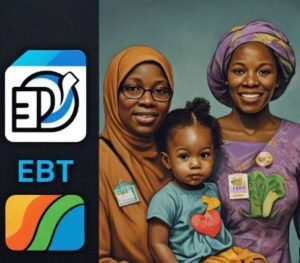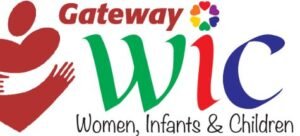When it comes to government assistance programs designed to support low-income individuals and families, two key programs stand out: the Supplemental Nutrition Assistance Program (SNAP), commonly known as EBT, and the Women, Infants, and Children (WIC) program. Both programs aim to alleviate food insecurity, but they operate differently and have unique sets of eligibility requirements. So, the question remains: EBT vs WIC programs—which one provides easy access to help and which one forces individuals to navigate restrictions?

In this article, we will explore the differences between EBT vs WIC programs, helping you understand their benefits, challenges, and how they serve individuals and families in need. By the end, you will have a clearer picture of which program might be more suitable for your needs, or how both programs can complement each other.
What is EBT?
The EBT program is a federal assistance program designed to help low-income individuals and families purchase food. Through EBT benefits, recipients are issued a plastic card, similar to a debit card, which they can use at participating retailers to buy food items. EBT vs WIC programs differ mainly in their scope, as EBT is available to a wider range of recipients, including families, single individuals, and those with a range of financial hardships.
To qualify for EBT, applicants must meet certain income and household size requirements. The amount of assistance a family receives is based on their financial situation, and it can vary depending on factors such as the household’s income, expenses, and the number of eligible family members.
What is WIC?
The WIC program is specifically targeted toward women, infants, and children, particularly those who are pregnant, breastfeeding, or have young children. Unlike EBT, which provides general food assistance, WIC is a more specialized program that provides nutritious foods such as dairy, eggs, fruits, vegetables, and cereals. WIC vs EBT programs highlights the distinction in their focus, as WIC aims to improve the health and nutrition of mothers and children who are at risk of malnutrition.
To qualify for WIC, applicants must meet income guidelines, be a resident of the state in which they are applying, and be considered at nutritional risk, as determined by a health professional. The benefits are specifically tailored to the nutritional needs of mothers and young children, and the program often provides vouchers or checks that can be redeemed at approved WIC retailers.

EBT vs WIC Programs: Key Differences in Eligibility
One of the main differences between EBT vs WIC programs is their eligibility criteria. While both programs target low-income individuals, EBT has a broader reach, allowing anyone who qualifies based on income to receive benefits. On the other hand, WIC has stricter eligibility rules, targeting specific groups such as pregnant women, mothers of young children, and infants.
For EBT, eligibility is determined by the household’s total income, the size of the household, and its financial resources. Income thresholds for EBT vary depending on the state and household size, but generally, applicants must have an income at or below 130% of the federal poverty level to qualify. This makes EBT a more widely accessible program compared to WIC, which has more stringent requirements focused on specific demographics.
EBT vs WIC Programs: The Scope of Assistance
While both EBT vs WIC programs aim to provide nutritional support, the types of food allowed and the scope of assistance differ. EBT recipients can use their benefits to buy a variety of food items, including bread, milk, vegetables, and meat, at participating grocery stores. The flexibility of EBT gives recipients a lot of freedom in choosing their food, but there are some restrictions, such as not being able to purchase hot foods, alcohol, or non-food items like toiletries.
On the other hand, WIC offers a more limited selection of food, but it focuses specifically on the nutritional needs of pregnant women, new mothers, and young children. WIC benefits typically cover specific categories like dairy products, baby food, fruits, vegetables, whole grains, and infant formula. For those eligible, WIC vs EBT programs shows that while WIC offers fewer choices, the foods provided are specifically aimed at improving health outcomes for mothers and children.
EBT vs WIC Programs: Ease of Access
When it comes to easy access to help, EBT has an edge in terms of convenience. EBT benefits are typically provided through an electronic card, which is accepted at most major grocery stores and some farmers’ markets. The application process for EBT is relatively straightforward, and recipients can often apply online or in-person at local offices. The EBT card can be used multiple times per month and provides recipients with the flexibility to purchase a wide variety of food items.

In contrast, WIC can be more restrictive. While WIC recipients are also provided with benefits, they are often given vouchers or checks that can only be redeemed for specific foods at authorized WIC retailers. Additionally, the WIC program usually requires periodic visits to health professionals for certifications, making it less convenient than EBT.
EBT vs WIC Programs: The Challenges
While EBT offers broad access to food, it comes with its own set of challenges. For example, some recipients may find it difficult to stretch their monthly benefits to cover all their food expenses. Additionally, EBT eligibility is based on income, which means recipients who experience fluctuations in income may have their benefits adjusted periodically.
In contrast, WIC is more targeted in its assistance, but it also poses its own set of challenges. The limited food choices and the need for certification may be seen as restrictive by some recipients. Furthermore, WIC benefits are only available to specific groups (i.e., pregnant women and children), which means many individuals who are not part of those groups may not qualify for this program, leaving them to rely solely on EBT or other forms of assistance.
EBT vs WIC Programs: Combining the Benefits
For some families, the ideal solution may be combining the benefits of both programs. While EBT vs WIC programs offer different types of support, they can complement each other. For example, a family with a pregnant mother and young children may qualify for WIC benefits to ensure they have access to nutritious food tailored to their needs, while also using EBT to purchase additional food items that are not covered under WIC.

Conclusion: EBT vs WIC Programs—Easy Access or Navigating Restrictions?
In the debate of EBT vs WIC programs, the decision largely depends on individual circumstances. If you’re looking for broad access to food with minimal restrictions, EBT may be the right choice. It provides recipients with flexibility and can be used at a wide range of retailers. However, for those who are pregnant, nursing, or have young children, WIC offers targeted assistance with specific nutritional benefits that aim to improve health outcomes for vulnerable groups.
While both programs provide important support, they also come with their own sets of challenges. EBT may seem like an easier solution for some due to its flexibility, but WIC can offer a more focused, health-oriented approach for qualifying families. Ultimately, understanding the differences and how each program works will help you make an informed decision about which one is best for you or how to benefit from both.




